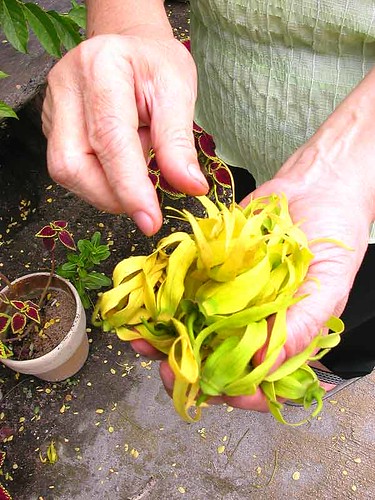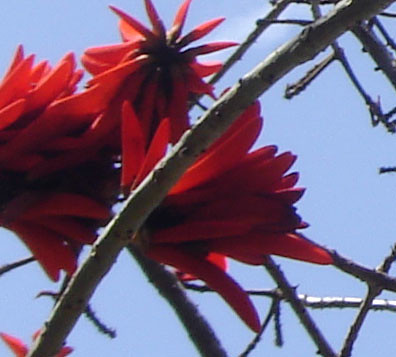Broken Hearts Tea Party
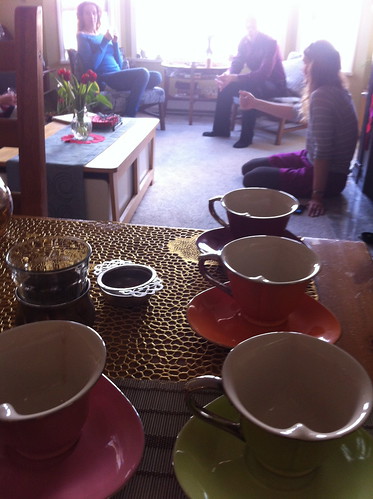
This is the setup - relaxed, casual but still luxurious, and with splashes of hearts and colours. It was an unusually small crowd because of the multiple holidays happening that weekend: Chinese New Year and Family Day long weekend - a new holiday just recently invented so that Canadian kids will get even less education than before. So, many people were away, and I will have to better plan for next year so it doesn't fall on a long weekend again. The good thing was that I got to spend quality time with my guests instead of boiling 20 liters of tea; and also considering I was sick all week I was able to sit down a relax a bit, and have civil conversations with people instead of standing up and running around for 5 hours straight (which is usually my share on my always overbooked Valentine's events).
I also really enjoyed preparing for and presenting perfumes that were inspired by tragic love stories. This will be a part of a separate post though - so please visit again later today. Below are more photos and the menu as well as some recipes you can easily whip up at home tonight for your sweetie or just with a bunch of single friends that don't want to feel sorry for themselves tonight!
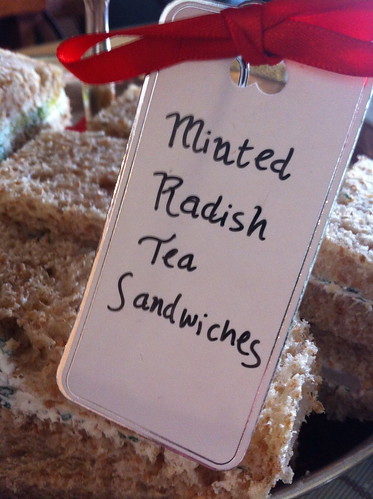
Minted radishes tea sandwiches - a surprisingly classic combination that never fails.
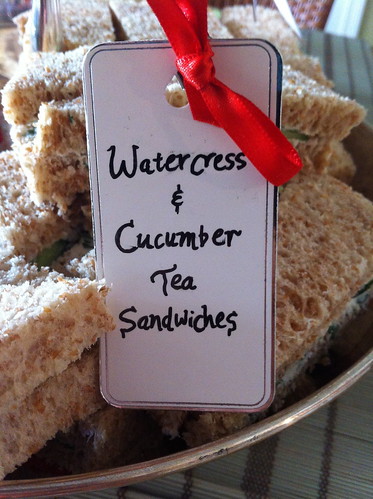
Cucumber & watercress tea sandwiches. Another classic.
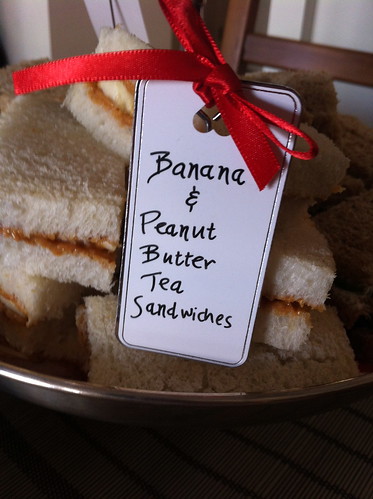
Peanut butter & banana tea sandwiches - not just for kids. Did you know that bananas are an aphorodisiac? And can you guess why?
To make this flavour a tad more grown up, spread a thin layer of hot red pepper jelly on one slice, and peanut butter on the other.

Meyer lemon scones - hot from the oven, and promptly served with Devon cream and with a blueberry & Meyer lemon marmalade.
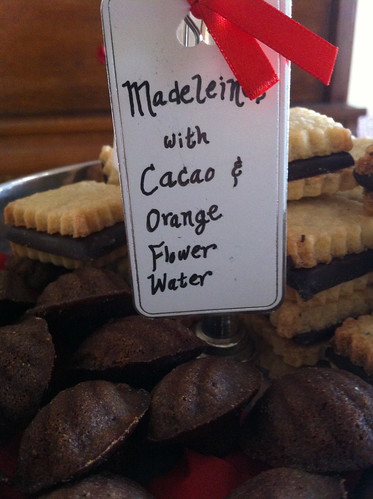
Madeleines are fantastic, shell-shaped cross between cookie and a cake. They are dense, moist yet light and are flavourful yet neutral enough to dip in a tea. Might even be superior to shortbreads in that regard, if only it wasn't for the extra work they require. These are chocolate flavoured and are scented with orange flower water. Sounds just like the kind of recipe I will invent; but it is actually from Maxine Clark's excellent book, Chocolate: Deliciously Indulgent Recipes for Chocolate Lovers.

Chocolate mint wafers, enclosed between two layers of sugar cookies with hint of black pepper. This recipe is so easy, yet so elegant. You have to try it! Use your favourite sugar cookie recipe and cut in whichever shape you like (circle or square works best). Place a chocolate mint wafer in between the cookies while they are still hot, and - voila! You have a cookie sandwich that is flavourful and looks very professional, without ever needing to whip up a filling, and with very little mess to clean...
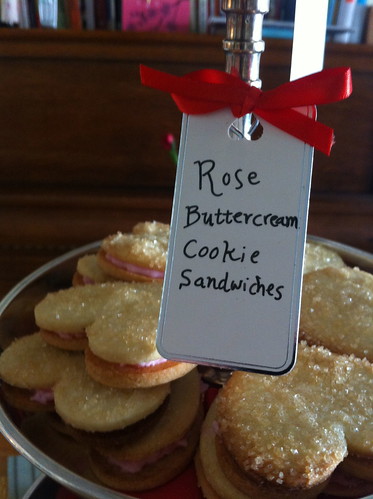
Rose almond sugar cookies with a layer of rosewater buttercream piped in between. Want the recipe? You got it!
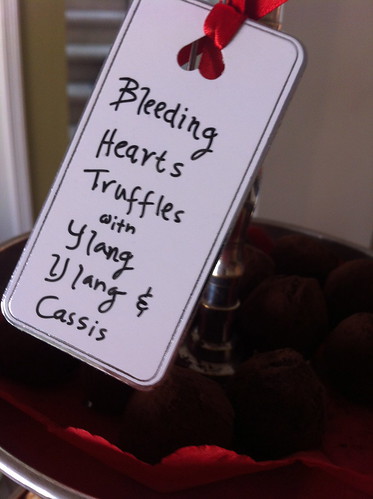
The cherry on the top, or the jewel in the crown are always the scented truffles I make for my special events and celebrations. Some were so popular that they've became a timeless chocolate bar (created in collaboration with CocoaNymph). But for the new flavours you will have to visit my studio and participate in these events. You're always sure to be surprised by an unusual, new flavour combination, featuring essential oils and tea infused ganache. This time was my first to experiment with organic ylang ylang oil of the best quality. I paired it with creme de cassis liquor, a combination inspired by Chamade. The result is a melt-in-your-mouth tropical floral experience with a round berry backnote. Introducing: the one and only Bleeding Hearts truffle!
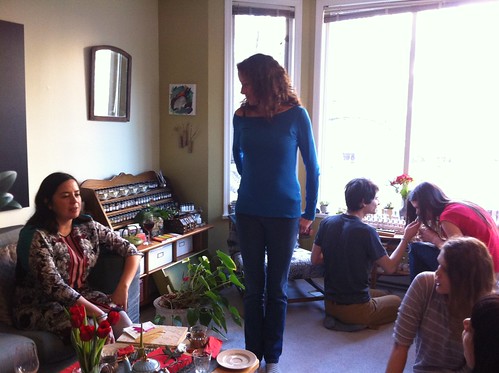
My lovely guests, customers & friends!
I love to see everyone having good conversation and playing around with the essences and perfumes. Sometimes they don't even need my help picking a scent - they just dive in and smell them all and share their insights with their friends and other guests; and then I know that they are real fragrance lovers.

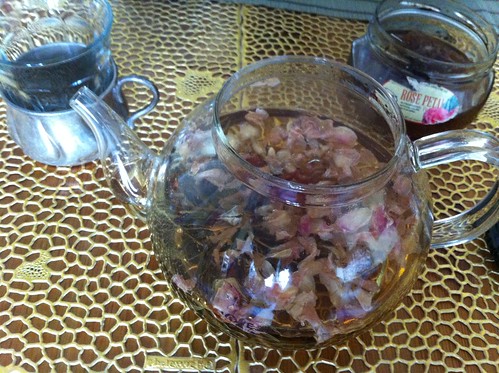
Lovers Tea: 1 hand-tied jasmine green tea + 1 teaspoon rose petals. Beautiful visual effect and ever so lovely fragrant cup of tea to sooth the soul and seduce the imagination. It's like a garden in a teapot!
You might want to strain the tea before serving; but I find that letting a rose petal or to through the spout creates a more sensual tea-sipping experience.

Bleeding Hearts cocktail. I'm willing to share my recipe:
1/2oz Creme de Cassis
1oz Hendricks gin
1/4oz Elderflower cordial
Club Soda
Angostura Bitters
Blood Orance, sliced- Shake with ice.
- Top with club soda.
- Add a dash of Angostura bitters. Stir.
- Garnish with a slice of blood orange.
- Sip slowly, savouring every drop.
- And please don't drive!







